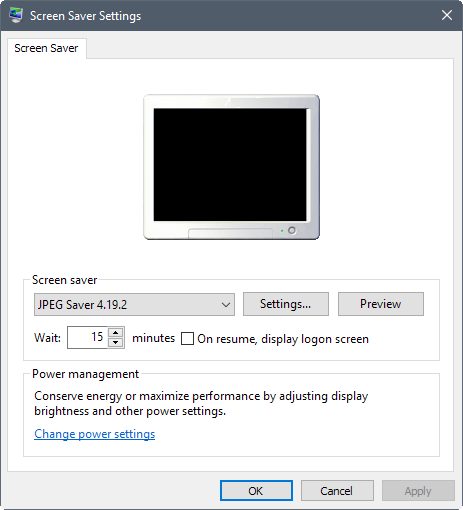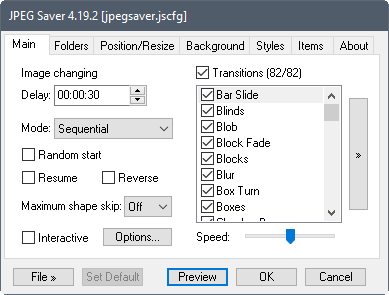JPEG Saver: photo slideshow screensaver
JPEG Saver is a free screensaver for Microsoft Windows devices that adds impressive photo slideshow capabilities to the screensaver functionality.
Screensavers are not really used anymore on devices that are connected to modern displays to save the screen from burn ins. Instead, they are mostly there for aesthetic or informational purposes.
This means that they are still useful to some users. Microsoft announced recently that it would deprecate some screensaving functionality in the upcoming version of Windows 10, something that is probably based on telemetry data that the company collects.
The screensaver configuration is rather hidden on Windows 10, and that is probably one of the main reasons why usage has dropped in recent time.
Tip: Check the installer to avoid installation of items that you don't require, e.g. DirectX Runtime.
JPEG Saver

JPEG Saver is a free screensaver for Windows that adds photo slideshow capabilities to the operating system.
Basically, what it lets you do is add photo folders that you want the screensaver to pull images from for the slideshow, and customize the slideshow by selecting effects, intervals, and other photo slideshow options.
JPEG Saver needs to be installed. The program picks the Windows folder by default for installation for ease of use.
The program picks the user's pictures folder by default, and may select subfolders as well automatically. You need to click on the settings link in the screensaver control panel to customize the selection and options.

First thing you may want to do is click on the folders tab in the interface to add and remove folders. This is useful if your photo collection is stored elsewhere, or if you want to select specific folders only for use by the application.
You may use filters to filter which images are selected by the screensaver. Filters can be based on filenames, creation and modification dates, or file sizes.
The five remaining tabs that are used to configure the screensaver slideshow offer the following options:
- Main -- Set the image changing interval, transition effects (82 ship with the screensaver), and the mode in which photos are picked.
- Position/Resize -- Select the position, color management, and what you want the program to do with larger and smaller images. Also, multi-monitor support is accessible here.
- Background - Customize the background, e.g. switch from a single color background to gradients or the computer desktop.
- Styles -- Customize text output.
- Items -- Add information to the screensaver. You can display information about the image, an analog clock, a text file, or information about a process.
Other useful features include enabling auto-rotation based on EXIF information, and interactive options that you may enable to control the screensaver similarly to slideshows.
JPEG Saver ships with options to save profile configurations. This can be used to save different configurations for use in the future. While you need to select these profiles manually whenever you want to switch, it is better than having to configure the screensaver options each time you do.
Verdict
JPEG Saver is a powerful screensaver that brings photo slideshow functionality to the operating system. Handy if you prefer to see different images when you are not using the computer for instance.
Now You: do you use screensavers?
This article was first seen on ComTek's "TekBits" Technology News

- Log in to post comments